ASTANA – The seasonal flooding in 2024 has escalated to become the most extensive in Kazakhstan for the last decades. The natural phenomenon occurred as a result of an intensive snowmelt and the government’s unpreparedness for its regulation. Meanwhile, this is not the first time Kazakh authorities have failed to prevent and address the water disaster.
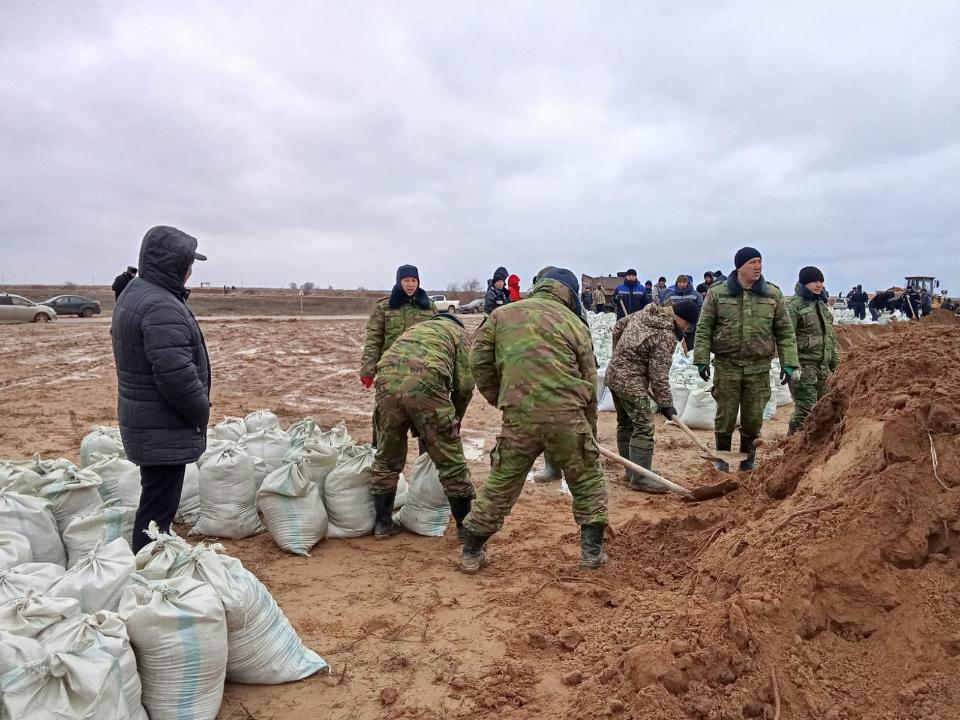
Nearly 350 people are involved in the shore protection works in the Atyrau Region in 2024. Photo credit: the department of emergency situations of the Atyrau Region.
“Perhaps this is the largest disaster in terms of its scale and consequences in over 80 years,” said Kazakh President Kassym-Jomart Tokayev in his address to the nation on April 6. Prior to that, Tokayev reprimanded the government structures for negligence and a lack of professionalism.
In recent years, the situation has annually recurred on varying scales. The floods regularly lead to tragic loss of human lives, apart from the harsh economic implications for the country.
Historical insights into flood dynamics
The most devastating floods occurred in 2010. The spring flooding struck the village of Kyzylagash in the Almaty Region, claiming the lives of 45 people, including eight children. It left 300 citizens injured and destroyed over 80% of the villages.
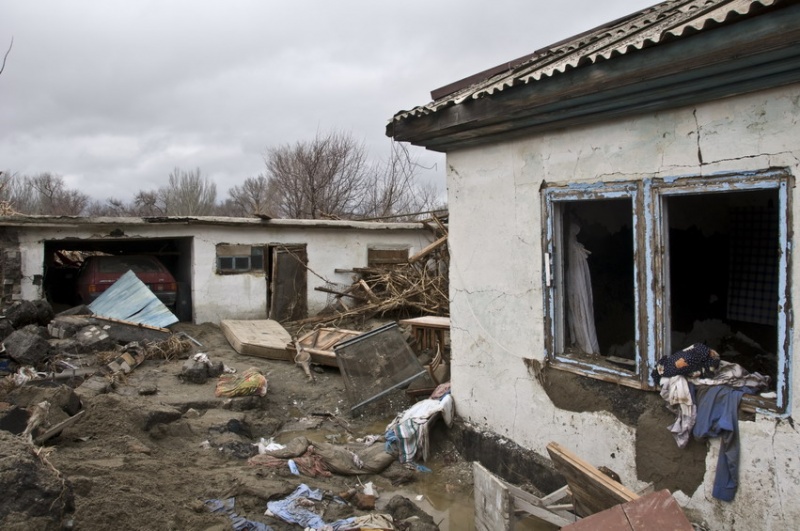
The flood consequences in the Kyzylagash village in the Almaty Region in 2010. Photo credit: bigpicture.ru.
The reason for the tragic incident was a dam failure as a result of snowmelt and heavy rains. Initially, the authorities considered storing additional water in the reservoir ahead of a dry summer.
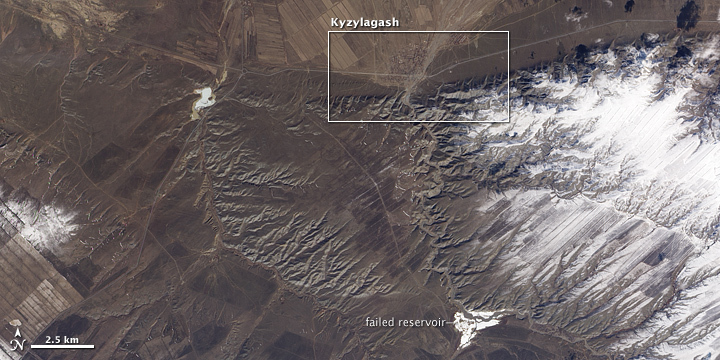
The reservoir burst nearby the Kyzylagash village due to a dam malfunction following heavy rainfall and a rapid increase in temperature. Photo credit: the National Aeronautics and Space Administration (NASA) Earth Observatory.
At that time, the floods affected 24 settlements in the East Kazakhstan Region. In compensation for the damage, the government allocated 500,000 tenge (US$1,120) to the flood victims.
Last week, the Kazhydromet National Hydrometeorological Service informed about the possibility of a repeat of the 1993 flooding in the Atyrau Region, the first severe flooding in the history of independent Kazakhstan.
It is now anticipated that the water level at the Atyrau hydrological station on the Ural River can reach up to 540-600 centimeters. This reminds local residents of the situation witnessed in the region in 1993 when the water level at the Atyrau hydroelectric power station exceeded 600 centimeters.
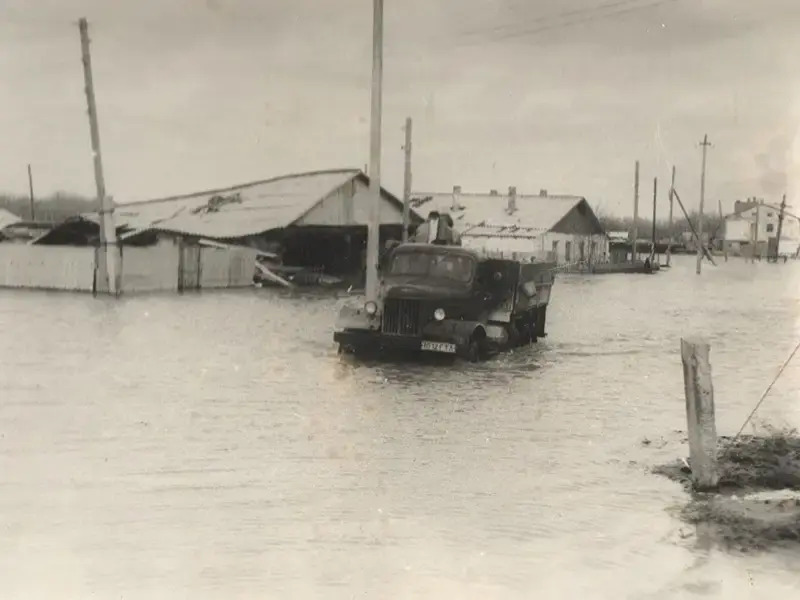
The Oiyl River overflowed its banks and flooded the Miyaly village in the Atyrau Region in 1993. Photo credit: Kazinform.
Back then, 10 people lost their lives. Nearly 3,000 residents were evacuated and approximately 30,000 individuals were left homeless. Most of the damage was concentrated in the Atyrau Region. The Aktobe Region and the West Kazakhstan Region also suffered considerable losses.
The 1993 flooding, which affected 669 settlements, including 41 districts and 11 cities, was driven by the same factors – snowmelt, heavy rainfall, and the lack of knowledge and competence of local authorities. These floods also didn’t go without a dam break. This time, it was the Aktobe reservoir, which couldn’t withstand the pressure.
In a prompt reaction to floods in 2024, the government was tasked with reinforcing dams near villages. Emergency personnel and local residents deployed over 7,000 sandbags to safeguard the village of Miyaly in the Atyrau Region. In addition, they utilized 350 tons of soil to fortify the dams.
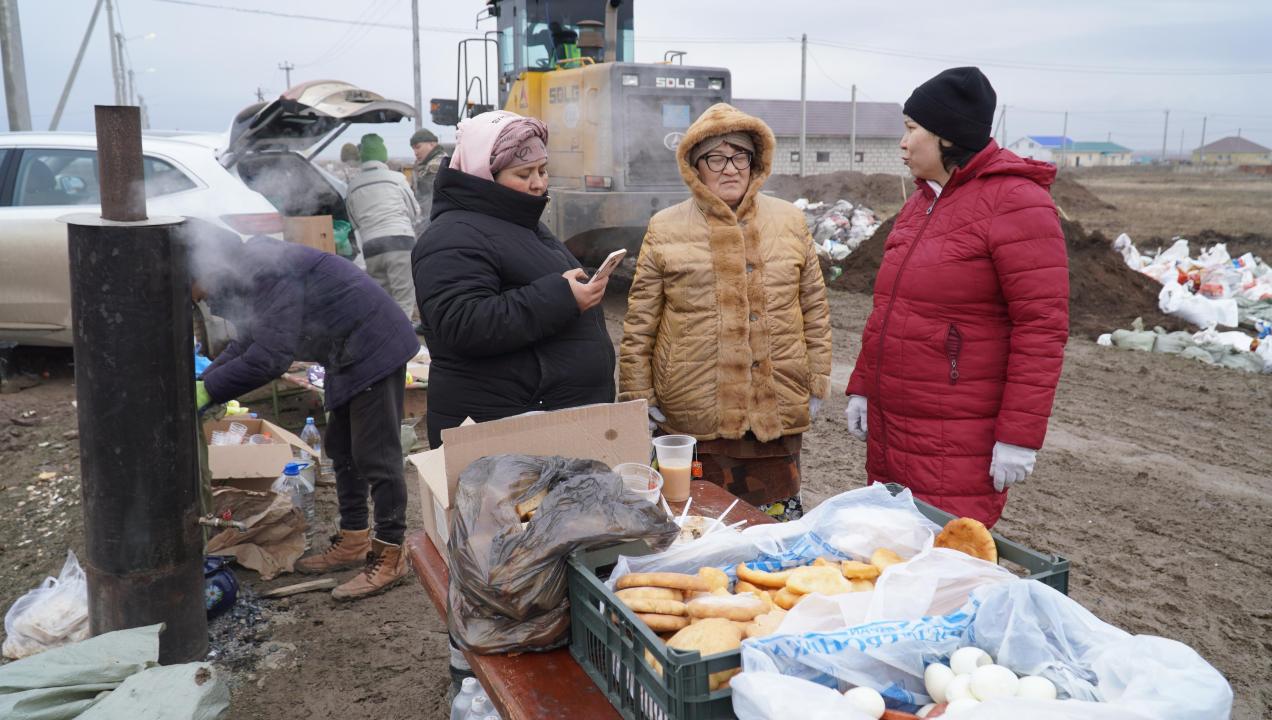
The flood prevention works in the Arshaly district of the Akmola Region. Photo credit: the Kazakh Ministry for Emergency Situations.
Sharp temperature increases resulting from climate change represent another exacerbating factor.
In 2008, the temperature change and snowmelt in southern Kazakhstan resulted in another flooding. This time, it affected 12,805 people and destroyed 411 houses. The total damage amounted to 15.2 billion tenge (US$34.2 million).
Depending on the climate conditions, protection systems of engineering facilities, and the preparedness of local authorities, each time the flooding has threatened different regions of the country.
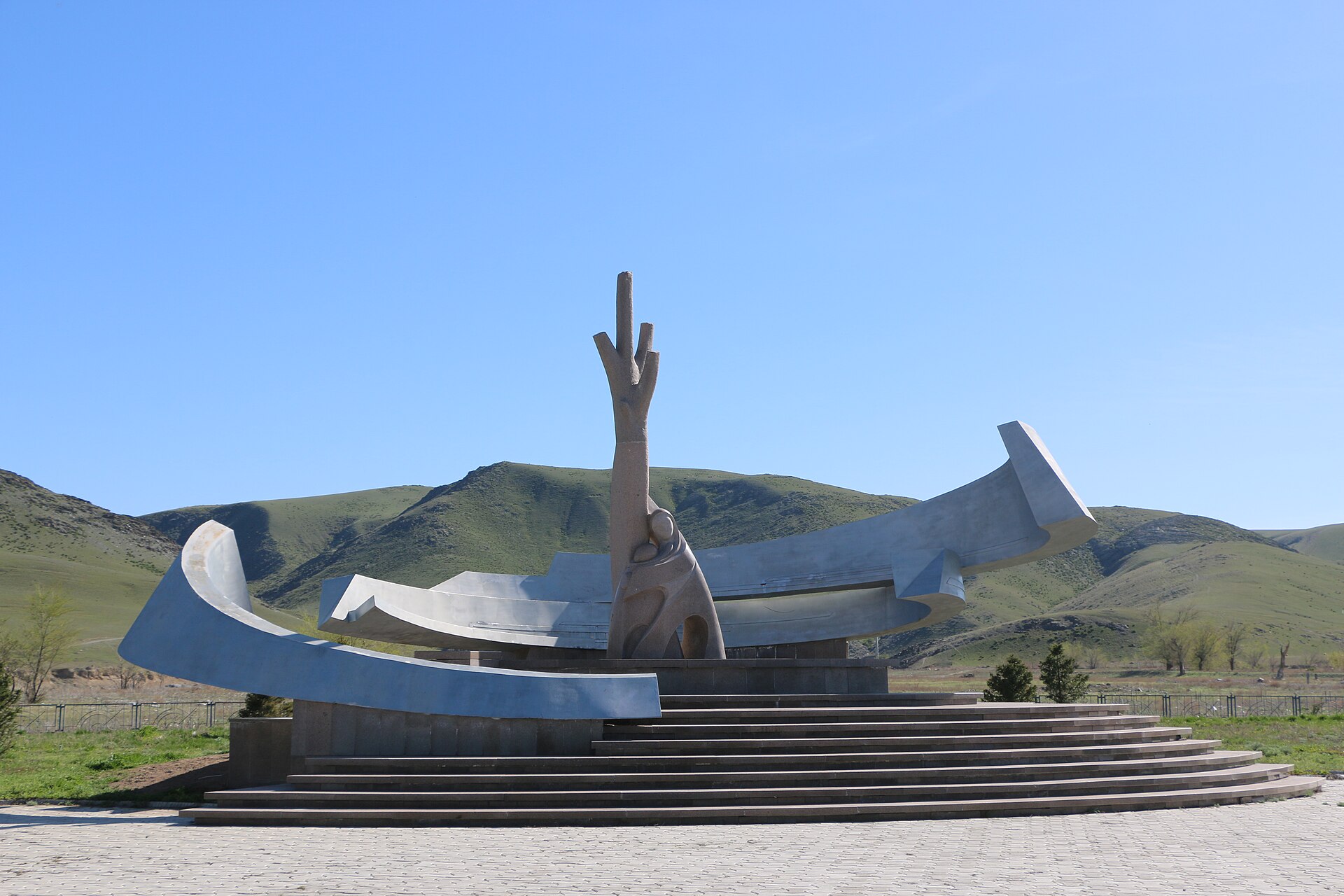
The Memorial of the 2010 flooding in Kyzylagash. Photo credit: Yakov Fedorov.
In 2011, a flood hit the West Kazakhstan Region, resulting in the loss of two lives and injuries to 16,000 people. Over 2,500 homes and more than 7,000 summer houses were inundated. The total damage surpassed $70 million.
As for the following year, the South Kazakhstan Region bore the brunt of the impact. Heavy rainfall was critical in 2012. Experts explained the floods with a surge of rainstorms and sudden warming. They impacted 969 households, with 428 homes completely submerged. To address the aftermath of the floods, the government allocated 713 million tenge (US$1.6 million).
In 2014, the Karagandy Region suffered the most due to the collapse of the dam at the Kokpekty reservoir. This accident took the lives of five people. Many residents were hospitalized with a diagnosis of hypothermia. Overall, 100 houses went underwater. The material damage was estimated at 87.6 million tenge (US$196,000).
Three years later, in 2017, the Akmola Region began to drown after the collapse of an earthen dam near the railway bridge due to snowmelt in the city of Atbasar. In the same year, abundant rains and snowfalls in the fields resulted in a significant influx of water into the Sergeyev reservoir in the North Kazakhstan Region.
In 2018, major floods hit the East Kazakhstan Region. Hundreds of people were also left homeless in Ust-Kamenogorsk, its administrative center, and over a dozen villages in the region.
Last year, due to a sharp increase in temperature and snowmelt, 350 residential homes were flooded, with the majority of affected citizens residing in the Kostanai Region, Aktobe Region, and West Kazakhstan Region.
Expert perspective on floods in Kazakhstan
According to the report of the United Nations Economic and Social Commission for Asia and the Pacific (ESCAP) in 2022, the climate change and air temperature increase resulted in earlier ice break-up on the upper reaches while downstream is still covered with ice. Ice jams raise the water level and cause waterside floods. The data from Kazakhstan’s Third Biennial Report for 2017 indicated a 33% increase in ice jams in the Almaty Region from 1991 to 2015.
The floods are observed in practically all major rivers in Kazakhstan. The largest damage is caused by the rivers Esil, Irtysh, Issyk, Nura, Saghyz, Sarysu, Shu, Syr Darya, Talas, Tobol, and Torgay.
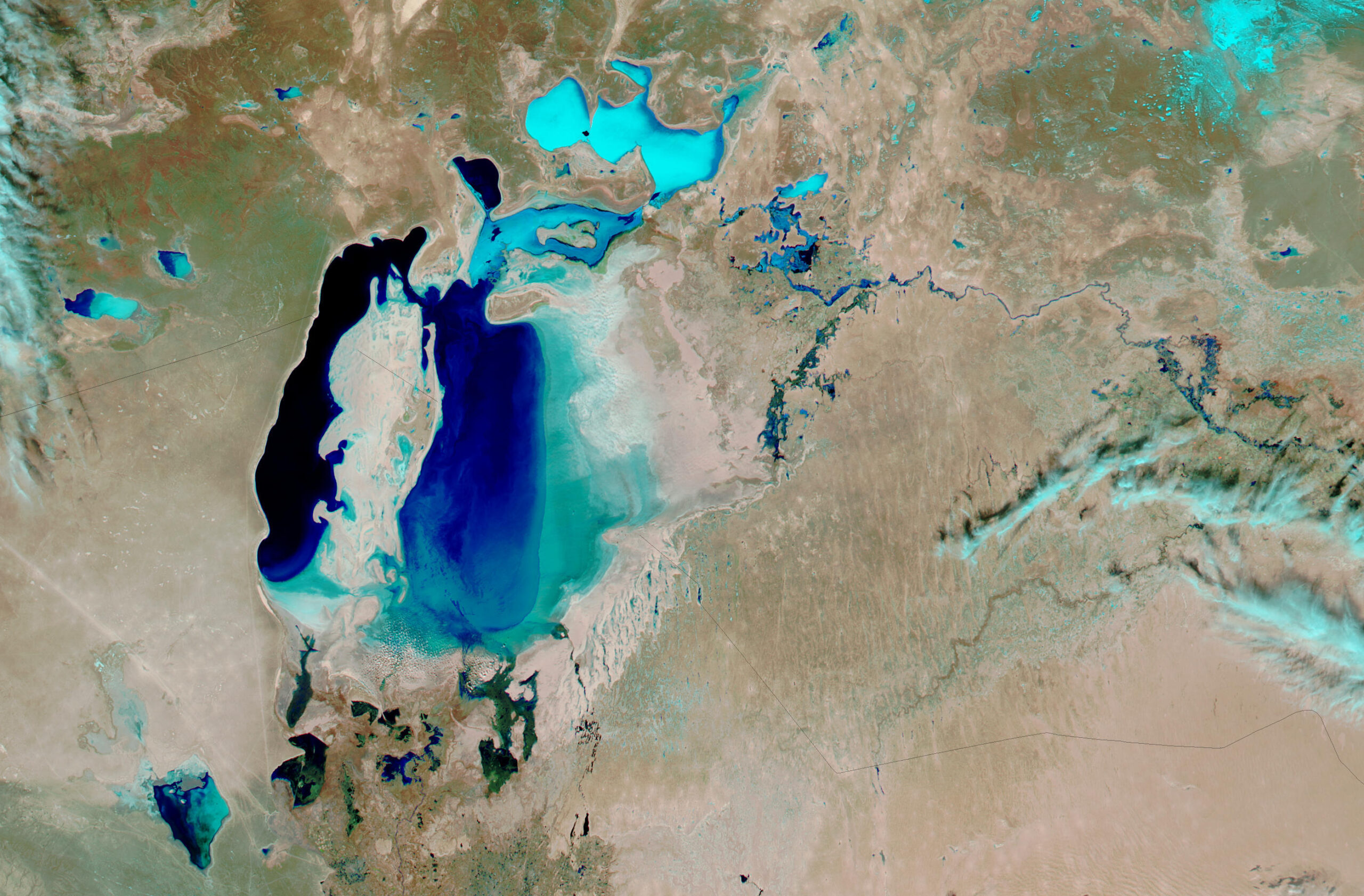
Floods in 2004 along the Syr Darya River, which runs into the North Aral Sea. The flood water (a darker shade of blue) expands around the ice-defined banks of the river. Photo credit: the National Aeronautics and Space Administration (NASA) Earth Observato
The research findings of the World Bank Group (WBG) and the Asian Development Bank (ADB) in 2021 forecasted an increase in the number of people exposed to extreme river flooding. The institutions anticipate a 72% rise in the median forecast, even when assuming no change in population.
The main factors contributing to the flooding of residential homes include the absence of adequate stormwater drainage systems, non-compliance with construction norms, building houses within water protection zones, unpreparedness of hydraulic structures, as well as untimely snow removal.
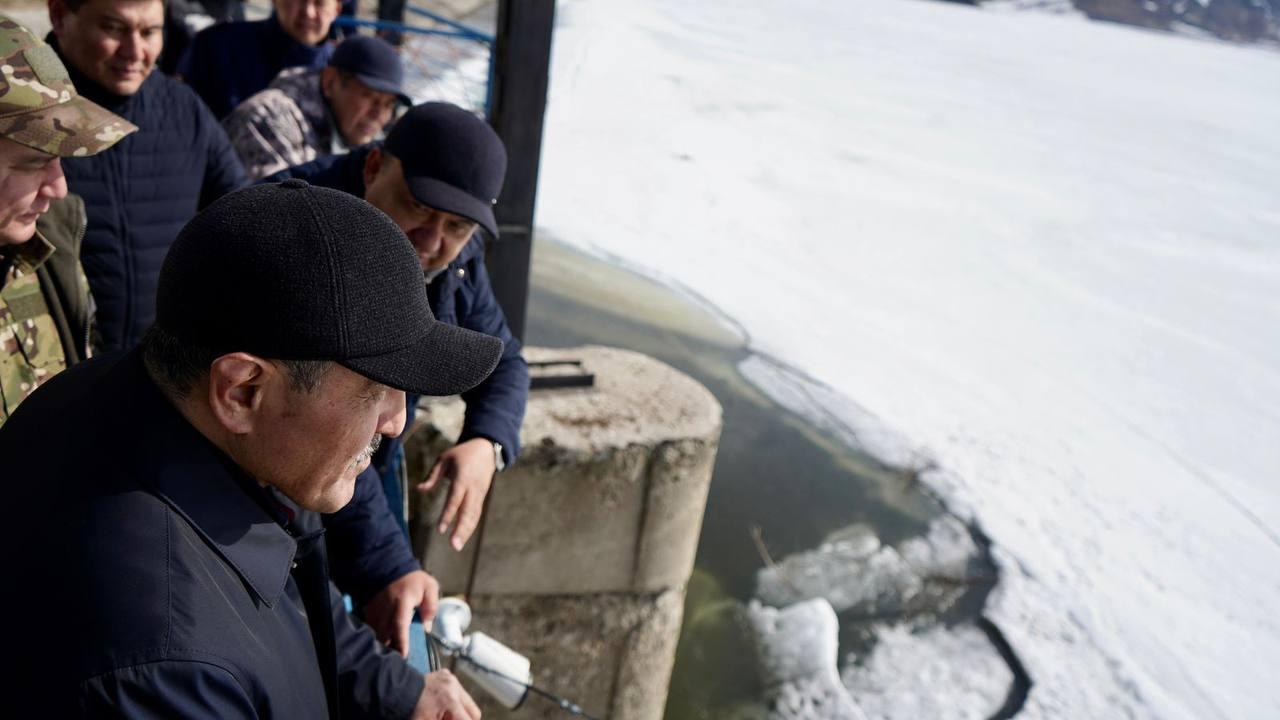
The water reservoirs in the Aktobe Region will undergo reconstruction in 2024. The government has ensured round-the-clock surveillance at the sites. Photo credit: the Kazakh Ministry of Water Resources and Irrigation.
Hydraulic engineer Amanbek Ramazanov identified two systemic shortcomings within the preparation for spring floods.
“Our flood preparations only commence by the end of winter. Unfortunately, this is too late, making it impossible to prevent natural disasters in this way,” he told the Kazinform news agency.
As for the second drawback, Ramazanov noted the unpreparedness for the consequences of climate change.
“This winter, the weather was unlike usual – we had a light snowfall at the beginning, followed by a mix of rain and snow, and abundant precipitation by the end of winter and in the beginning of spring,” he said.
According to another expert, Amirkhan Kenshimov, Kazakhstan needs to “establish special water management institutions.”
“Only then will we gradually rid ourselves of the problem of annual flooding. It is impossible to resolve this issue instantly. To prevent this from happening again in the future, we need to train competent specialists in water resources and allocate significant funds for this purpose,” said Kenshimov.
This year, the large-scale crisis once again emphasized Kazakhstan’s shortage of technical specialists in water resources. The head of state urged a thorough examination of international practices concerning flood management.
According to the Kazakh Ministry of Emergency Situations, over 96,472 people, including 31,640 children, have been rescued and evacuated since the floods began. The water disaster brought together 25,000 volunteers nationwide.

